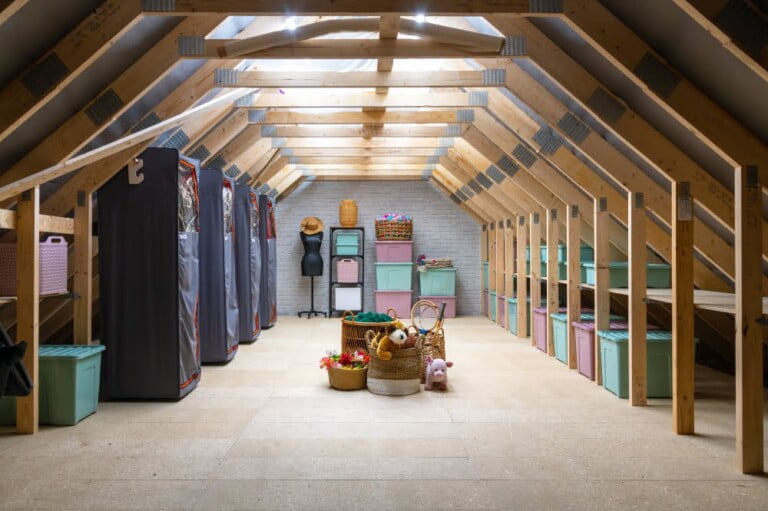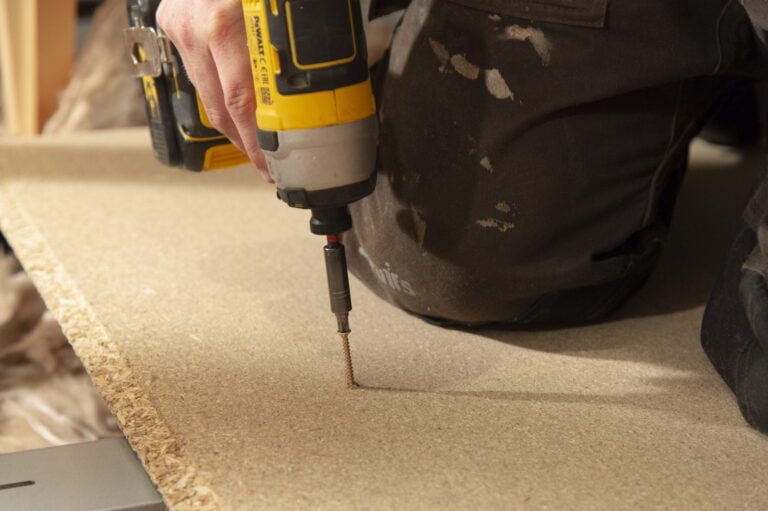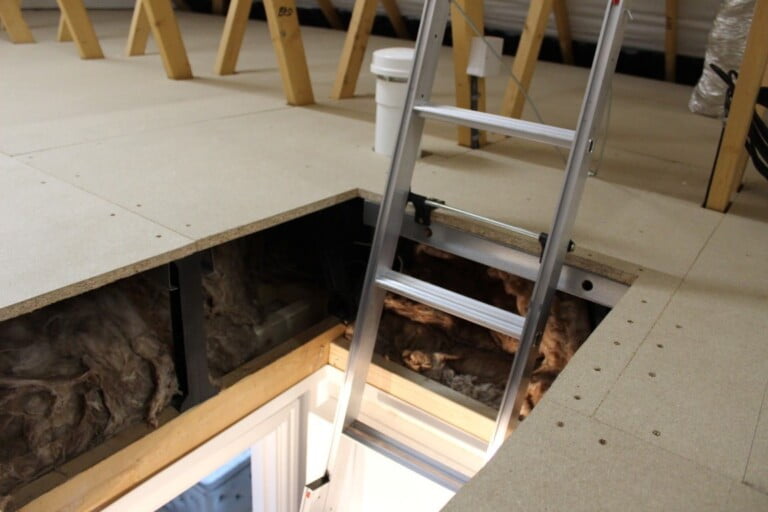The complete guide to loft boarding for newer homes.
How to avoid the most common mistakes when boarding your loft

Got a newer home? Chances are your loft's got some insulation and... not much else. If you're living in a house built after 1999, you're probably wondering if it's safe, or even possible, to board your loft for a bit of extra storage. The short answer? Yes. And here's how to do it properly.
Why newer homes need a different approach
New builds come with lots of lovely thick insulation in the loft (usually around 270mm deep). That’s great for your energy bills but not so great if you squash it by boarding straight over the top. Doing that can damage the insulation and even void your NHBC warranty.
That’s why we use a raised system like LoftZone. It lifts the boards above the insulation so everything keeps working the way it should. No squashing, no overheating, no damp. Just a proper, useful loft space.
What can you actually use a boarded loft for?
A boarded loft isn’t a new room, but it is a great place to keep the stuff you don’t use every day:
- Christmas decorations
- Suitcases
- Baby stuff you’re not ready to part with
- Spare bedding and out-of-season clothes
It’s about clearing out the cupboard under the stairs, not building a second lounge.
Why do it with Loftopia?
Because we keep it simple:
- No salespeople. We do it all over the phone.
- Clear pricing online. No hidden extras.
- Installed in a day. Job done.
You pick a package, we get it sorted. That’s it.
Common questions about loft boarding for newer homes
We get it. When it comes to boarding your loft, especially in a newer house, there's a lot to consider. These are some of the most frequently asked questions from homeowners just like you.
Can I board my loft?
Yes, you can! But it needs to be done properly. Boarding a loft the right way means using a raised system that protects your insulation and doesn’t damage the structure. That’s why Loftopia uses LoftZone - it keeps things safe, breathable, and compliant.
Can you lay loft boards directly onto joists?
Not in newer homes. That approach flattens your insulation, reduces energy efficiency, and can cause moisture issues. Raised systems are designed to avoid all that and give you safe, stable storage.
Can you board over loft insulation?
Only with a raised system. Boarding directly onto insulation crushes it and stops it working. We board above your insulation, so your home stays warm and your loft stays dry.
Can I board my new-build loft?
Yes, and it’s what we do best. New builds just need a more careful approach to protect insulation depth and air flow. That’s why we never board straight onto joists.
Does loft boarding void the NHBC warranty?
It can, if you do it the wrong way. Raised systems like LoftZone help protect your insulation and meet NHBC requirements. It’s one more reason to avoid DIY or cut corners.
What weight can a new-build loft take?
Lofts are generally fine for light storage if boarded properly. We make sure the load is spread safely and only use systems that are designed for domestic storage use.
How long does loft boarding take?
Most Loftopia jobs are done in a single day. We arrive, install your system, clean up, and you’re ready to use the space straight away.
Do I need planning permission or building regs consent?
For basic storage using raised boarding, you don’t usually need planning permission. But it does need to be done in line with building standards. We handle all that.
Can I board my loft and use it as a bedroom?
Not really. Boarding your loft is perfect for storage but not for living space. Turning it into a habitable room involves a full conversion with structural work, fire regs, and more.
What about downlights or cables when boarding?
We take care of all that. Our team works around lighting and wiring, ensuring nothing is covered or overheated. It’s all part of a safe, professional install.
Avoiding common mistakes when boarding your loft
Before you grab a drill and some boards, it’s worth knowing where most people go wrong. Boarding your loft the wrong way can lead to insulation problems, damp, or even safety risks. We’ve put together a separate guide to help you avoid the most common pitfalls, so your loft ends up safe, useful, and built to last.
Read: Five common mistakes when boarding your loft
Common questions about loft storage and insulation
Thinking of using your loft for storage? You’re not alone. But to get it right, you need to think about insulation, airflow, and how you use the space. Here are the questions we get most.
Is my loft suitable for boarding?
If you have accessible joists and enough headroom, it probably is. Most newer homes are ideal candidates, especially when using a raised system that protects insulation.
Can I add more insulation and still use my loft for storage?
Yes, in fact, we often top up insulation while we’re at it. Raised boarding sits above the insulation, giving you the best of both worlds: warmth and storage.
How much insulation depth should I leave?
The recommended depth is 270mm. We always allow for full insulation height and never squash it. That way, your home stays energy-efficient.
How do I prevent condensation or mould in the loft?
Proper airflow is key. Raised boarding systems keep air moving, which stops moisture building up. We also make sure vents and breathable areas stay clear.
What’s the energy-saving benefit of proper loft boarding?
When done right, boarding won’t interfere with your insulation, so your loft stays warm in winter, cool in summer, and helps cut your energy bills.
Common questions about loft ladders
A good loft ladder makes accessing your storage easy and safe. But with so many options, how do you choose? Here are the top questions our customers ask.
How much do loft ladders cost?
Prices vary depending on the type, material, and mechanism. Our packages include ladder options, and everything is clearly priced upfront. No hidden extras.
Which type of loft ladder should I pick?
If you use your loft occasionally, a lightweight aluminium ladder is perfect. For regular access, a timber or 3-section aluminium ladder offers better comfort and strength.
What is the best ladder for small spaces or high ceilings?
We have compact and extended options to suit every layout. Just tell us your ceiling height and available space, and we’ll recommend the best fit.
Can I install a loft ladder myself?
Technically, yes. But for safety and a clean finish, we always recommend professional installation. It also ensures everything lines up with your hatch and boarding.
What height/size of ladder do I need?
It depends on your ceiling height. We take exact measurements and only install ladders that match the space properly, so they’re safe and easy to use.
Do I need planning permission to install a ladder?
Nope! A loft ladder installation for storage access doesn’t require planning permission.
Are loft ladders safe?
Absolutely, if installed correctly. We only use high-quality ladders with non-slip treads, secure mechanisms, and optional handrails for extra support.


